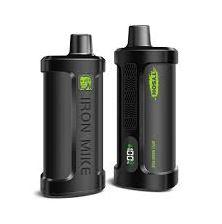Encapsulated flavours market outlook shaped by shifting consumer preferences and health-driven trends

The encapsulated flavours market is increasingly shaped by changing consumer preferences, particularly as more individuals seek food products that balance taste with health and sustainability. Encapsulation technology has emerged as a critical tool for flavour manufacturers, offering the ability to preserve delicate flavour compounds, enhance shelf stability, and control release during food processing or consumption. This adaptability not only meets the demand for quality but also aligns with broader health and wellness movements shaping the global food industry.
Market drivers
One of the strongest drivers of this market is the rising interest in natural and organic foods. Consumers are moving away from artificial flavours and additives, creating a need for encapsulated natural extracts, essential oils, and plant-based flavour solutions. Encapsulation allows these sensitive ingredients to withstand production processes without losing their potency. Furthermore, the expansion of functional foods and beverages—ranging from fortified dairy to protein-rich snacks—has elevated the role of encapsulated flavours in masking undesirable aftertastes from added nutrients or plant proteins.
Technological advancements
Advances in microencapsulation and nanoencapsulation are revolutionizing how flavours are developed and integrated into products. Techniques such as spray drying, coacervation, and liposomal encapsulation are allowing for greater flexibility and efficiency in formulation. These technologies improve not only flavour retention but also solubility, controlled release, and cost-effectiveness. For instance, beverages can now carry vibrant, long-lasting flavours without degradation, and baked goods benefit from stable flavour profiles throughout shelf life. Such innovations are especially relevant in markets where consumers demand both convenience and premium quality.
Industry challenges
Despite its growth, the industry faces hurdles. High production costs associated with advanced encapsulation techniques can be a barrier for small and mid-sized manufacturers. Additionally, ensuring regulatory compliance with food safety standards across regions adds complexity to market expansion. Consumer skepticism toward overly processed or engineered ingredients also requires companies to carefully balance technology-driven innovation with clean-label transparency. Maintaining affordability while meeting demand for natural and sustainable flavour systems remains a pressing challenge.
Regional outlook
Geographically, North America and Europe lead the encapsulated flavours market, driven by mature food and beverage industries and strong consumer demand for clean-label products. Asia-Pacific, however, is expected to experience the fastest growth due to its rising middle-class population, urbanization, and expanding packaged food sector. Emerging economies in Latin America and Africa also present untapped opportunities as global manufacturers invest in new production facilities and distribution channels to meet local demand.
Future opportunities
Looking ahead, the market will benefit from the growing integration of encapsulated flavours into plant-based and alternative protein products. As vegetarian and vegan lifestyles become mainstream, flavour innovation will play a key role in improving taste experiences. Additionally, the adoption of encapsulated solutions in nutraceuticals and dietary supplements is expected to expand, reflecting the rising consumer focus on preventive health. Companies that emphasize sustainable sourcing, transparent labeling, and cutting-edge delivery systems are likely to secure a strong competitive edge.






